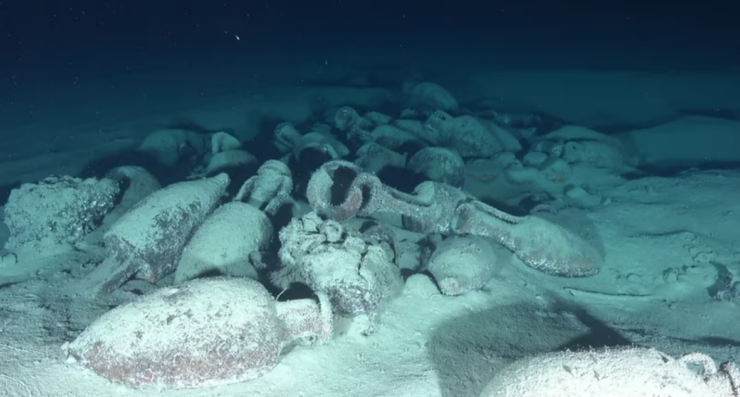For thousands of years, the treacherous marine path through the Skerki Bank in the Mediterranean has been a key strategic importance for conquerors – and a treasure trove of shipwrecks for looters.
It serves as a watery cemetery for hundreds of ships that have perished in fights from antiquity to the present or have met their demise due to the fiercely opposed currents and ominous network of rocky heights that are just below the surface.
An multinational team of underwater archaeologists has now uncovered some of the secrets hidden in the depths of the region bounded between Sicily to the north and the Tunisian coast to the southwest. Experts from Algeria, Croatia, Egypt, France, Italy, Morocco, Spain, and Tunisia mapped a 10 km square area of the seabed in the largest and most ambitious multinational expedition ever carried out under the auspices of Unesco in an effort to research and safeguard their shared undersea cultural legacy.
Three of the ships were previously unknown. The ruins of six shipwrecks from antiquity to the 20th century were documented using two robots and multibeam sonar.
After four years of planning, the multilateral team for the mission finally met for two weeks last year, and they shared their results.
Unesco archaeologist Alison Faynot told The National “Underwater heritage is very important, You think it is extremely protected and unreachable and yet it is quite fragile, and just a change in the environment or seabed can have a very dangerous impact on it.”
“People see underwater cultural heritage as a treasure and something to collect, but it is really significant. All its little details give us so many clues about where we come from.”
“In the Mediterranean, it shows why it means so much since eight countries are involved and have come together because they want to share the heritage. Underwater cultural heritage is not a treasure, it is vulnerable and because of it we really need to protect it and educate people in protecting it.”
Two independent initiatives that were the focus of the group’s mission were a thorough investigation of the Skerki Bank on the Tunisian continental shelf and a continuation of the work of American archaeologists Robert Ballard and Anna Marguerite McCann in the Sicilian Channel.
They discovered three previously unknown shipwrecks while conducting a thorough survey of the ocean floor near the Keith Reef, a particularly dangerous area of the Skerki Bank: one is thought to be a merchant vessel dating as far back as the first century BC, and two are a metal vessel and a wooden vessel from the late 19th or early 20th centuries.
The archaeologists used Hilarion, a robot that spent 18 hours under water, to check and document the targets of the newly mapped area, and multibeam sonar to gather more information about the area.
This type of underwater heritage is vulnerable to exploitation, fishing, smuggling and the effects of climate change. The aim of the mission is to pinpoint the area where many shipwrecks have been found and document as many artifacts as possible.
For archaeologists, the three discoveries in Tunisia have been a particular source of joy, not only because of their presence, but also because of the potential they could represent for other as yet hidden archaeological remains lying on the seabed.
“When we found the new ships it was a (feeling) of relief because of all the effort we have all put in and that there are still things to learn from such a heavily looted area and that there is still something to protect,” Ms Faynot said. “We just felt happiness and excitement that there is still more to learn.”
The team did not retrieve objects from the ships but hope to return with more advanced technology in the future. “The technology is slowly developing, that’s why it is so important not to retrieve and collect artefacts, we decided collectively not to do it, we have documented it so we can come back maybe with better tools. We would love to go back to Tunisia and dive there and do a human survey and not a robotic one. There are many areas of the world we would like to go to next.” Ms Faynot said.
A documentary of their work is due to be shown in France,Paris later this year.
